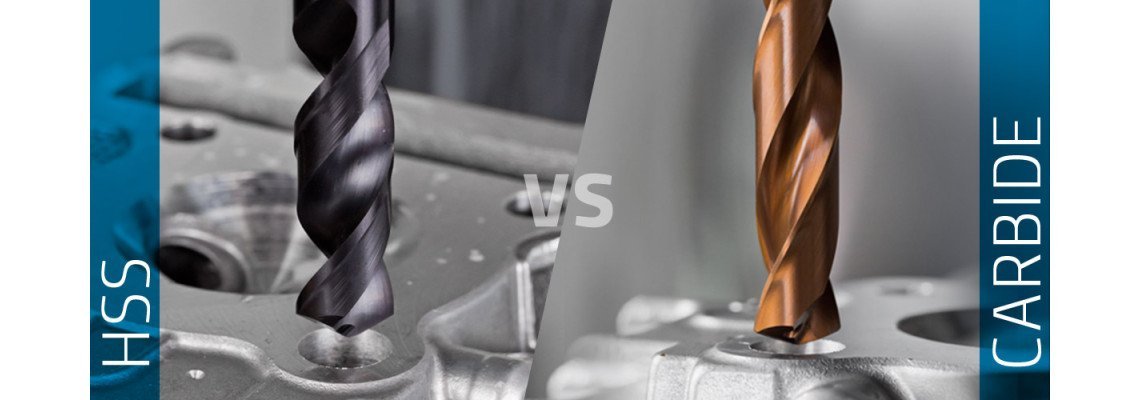
Carbide and High-Speed Steel (HSS) are both commonly used materials for cutting tools, but they have distinct differences in terms of properties and benefits.
Benefits of Carbide tools:
Hardness: Carbide tools are made of tungsten carbide which is a very hard and durable material that can withstand high cutting speeds and temperatures.
Wear resistance: Carbide tools have a high resistance to wear and can maintain their sharpness for a longer period of time than HSS tools, which can improve productivity and reduce the need for frequent tool changes.
High-temperature resistance: Carbide tools can withstand high temperatures generated during cutting, making them suitable for machining hard and abrasive materials.
High precision: Carbide tools are able to hold tight tolerances and produce parts that are accurate to within microns, making them ideal for precision machining applications.
Versatility: Carbide tools come in different shapes and geometries, and can be used for a variety of machining operations including turning, milling, drilling, and boring.
Benefits of HSS tools:
Cost-effective: HSS tools are relatively inexpensive when compared to carbide tools, making them a cost-effective option for some applications.
Easy to sharpen: HSS tools can be sharpened easily, unlike carbide tools that need to be replaced when worn out.
Good for softer materials: HSS tools are suitable for machining softer materials, such as aluminum, copper, and brass.
Good for lower speed machining: HSS tools are suitable for machining at lower speeds, which is common in some manual and conventional machining operations.
In conclusion, the choice between carbide and HSS tools depends on the specific application and the machining requirements. Carbide tools are best for high-speed and precision machining of hard and abrasive materials, while HSS tools are a cost-effective option for softer materials and lower speed machining operations.

3
Guide To Car Key Sensor Repair: The Intermediate Guide To Car Key Sensor Repair car key sensor Repair
magnificent post, very informative. I'm wondering why the other specialists of this sector don't understand this. You should proceed your writing. I'm confident, you've a great readers' base already!
See What Robot Vacuum Cleaners Uk Tricks The Celebs Are Making Use Of Robot vacuum cleaners uk (panoptikon.org)
Leave a Comment